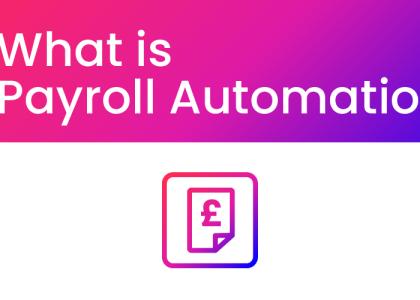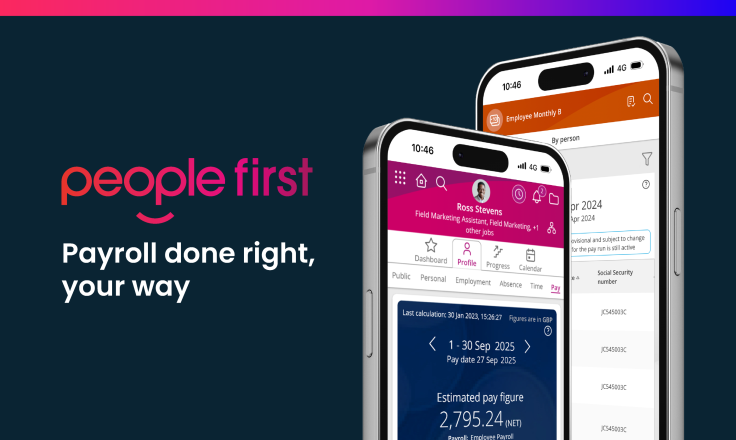Definition of payroll automation
A lot of the day-to-day of payroll requires a lot of manual intervention. One of the best gifts you can give your payroll department is payroll automation, which will help streamline these processes. From tax compliance, to calculations, to payroll processing, automated payroll can help make your pay cycle a lot less stressful. Payroll software can really help with this. With many payroll departments spending more time fixing errors than getting people paid, automation can have a huge impact on a modern business. Let’s unpack some of the benefits.
The benefits of payroll automation
Firstly, payroll automation leaves you less prone to errors. People make mistakes, they can misread text, for example. Even if no mistakes are made, you still need to double check everything. That leads to a lot of extra time spent just running payroll. Payroll automation can also help make tax filing a lot simpler, as these processes can be standardised in line with new regulations. Automation is also highly scalable. This is ideal for growing businesses, as your payroll won’t get significantly more complicated as you hire more people.
How to implement payroll automation
To get started with implementing payroll automation, you need to take a moment to evaluate your current processes. What’s working, and what isn’t’? Do you worry about compliance, or errors? Do you often have to jump in to make last minute changes? Do employees ever get paid incorrectly? Have a conversation with your payroll team and ask what improvements they’d like to see. Once you have this information, you’ll be able to start searching for a payroll provider. There is no one size fits all system, so finding the best provider is a matter of finding who will match your needs and give you the additional support you need.
Now you’ve picked a provider, you’ll need to prepare your existing data to move to the new system. The better prepared you are, the smoother your migration will be. Not only do you need to bring the data together, but you’ll also need to validate it to ensure accuracy. You also need to archive any data you don’t use while still ensuring it’s accessible for auditing purposes. Throughout this entire process, you need to test, test and test again. Are you getting the results you expect? You may want to consider a parallel run for the first few post-implementation pay cycles, just to ensure things are working as intended.
Essential features of payroll automation tools
Different payroll automation tools will have different features, but there are several essential parts that you should look for.
- Employee data management
This one’s simple, yet vital. You need to be able to store key information like names and bank details.
- Compliance tools
A good automation tool will let you update tax codes easily, but EPS and FPS reporting is also
- Automate employee payments
Getting people paid in a timely fashion is a vital part of your pay cycle. Employees need consistency, and you need to get a sense of your cash flow.
- Calculations
Most payroll tools will let you automate a range of calculations, such as national insurance contributions, compensation, and deductions.
- Reporting
Reporting will help you drive the direction of the business forward, as well as match compliance requirements.
- Payroll processing
Manual processing requires a person to spend a few days intervening and running the cycle. Automated systems can be done at any time without constant oversight needed.l
These features will help solve some of the most common problems payroll departments around the world are facing on a regular basis. But it’s important to make sure you’re solving the issues your team are facing, or else buy in will be low and costs will increase.
The most common challenges in payroll automation
That’s not to say that payroll automation processes are all plain sailing, there are a number of challenges that you’ll want to consider. Technology can never truly replace a payroll manager, because automated payroll systems aren’t infallible, despite the advances of AI in payroll. They’re not great at handling exceptions, and you still need a person to make any final checks before payday. Likewise, automated payroll systems software can’t turn the time and cost savings they make into strategy. That needs a human to help steer. They’ll be able to provide the advice and insights. What is critical to understand is that this will free up your payroll professionals from busywork, enabling them to extract the most value and make a big impact without spending loads of time on mundane tasks. This will also ensure data accuracy and integrity.
Choosing the right payroll automation solution
If you’d like to take a look at what our payroll automation tools offer, get in touch to book a demo. People First Payroll offers a revolutionary real-time payroll engine that ensures any payroll calculations are made instantly as you change the data. Not only does this improve your payroll processes behind the scenes, it also gives employees a remarkable amount of visibility on their pay, improving financial wellbeing in the workplace.
Plus, all of this integrates with our HR and Finance solutions, so you can connect all your data effortlessly for maximum impact.



